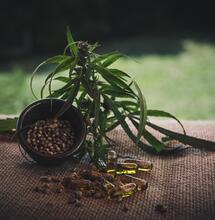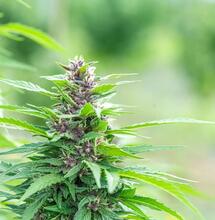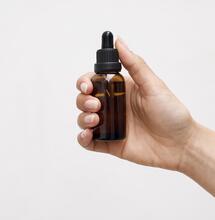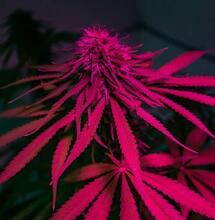Water, EC and Nutrient Solution

The concentration of your nutrient solution has an enormous effect on plant development and growth.
The concentration of your nutrient solution has an enormous effect on plant development and growth.
|
Irrigation water is often full of ionic salts that affect the uptake of nutrients |
Measuring the overall concentration or strength of a 'balanced' solution is essential. Focus on nutrient balance and concentration in the solution to head off deficiencies before they cause big problems.
Fertilizers (dissolved ionic salts) conduct electrical current when in solution. The ions in an ionic compound are held together by ionic bonds. These ions, 'cation' (+ positive) and 'anion' (- negative) have positive and negative charges that attract one another and bond. Nutrient (salts) concentrations are measured by their ability to conduct electricity through a solution. A dissolved salts meter measures the overall concentration or strength of a nutrient solution. For example, pure distilled water has no resistance and conducts virtually no electrical current. When nutrients (dissolved ionic salts) are added to pure distilled water it conducts electricity. A greater concentration of nutrients in solution conducts more electricity.
Several scales are currently used to measure how much electricity is conducted by nutrients including: electrical conductivity (EC), conductivity factor (CF), parts-per-million (ppm), total dissolved solids (TDS) and dissolved solids (DS). Most gardeners in the United States use ppm to measure overall fertilizer concentration. Gardeners in Europe, Australia and New Zealand use EC; however, they still use CF in parts of Australia and New Zealand.
|
Brittle leaves are the product of a high EC |
Each variety of Cannabis has an ideal EC range for optimum growth. Some varieties are incredibly heavy feeders, while others are easy to over-fertilize; check with seed and clone vendors for details. High EC results in 'water stress', causing plant cells to lose water - wilting foliage is the first sign of an EC reading that is too high and brittle leaves are the product of high EC. Water moves via osmotic pressure into the more concentrated solution surrounding the roots. When a mild EC overdose occurs, plants compensate and foliage growth becomes tough or hard, with brittleness to it. Foliage is often darker green and plants are shorter, with smaller leaves.
Many commercial Cannabis gardeners give their flowering crops progressively higher EC concentrations. The flowers plump up and put on weight, but this practice tends to make the buds develop a very harsh taste when smoked or vaporized, due to the excess salts left in plant tissues. The residual ash is also very dark and abundant.
|
An imbalanced EC may cause potassium burn |
EC is also affected by water uptake. On hot days, when more water is taken up from the solution, nutrients concentrate and EC climbs. A low EC also causes increased water uptake and foliage soon becomes weak and soft, often lighter green, as well. However, lowering EC during hot spells is essential to avoid problems. Measure your EC daily and adjust accordingly, relative to growing conditions.
To check the EC of the nutrient solution, collect samples from the reservoir, growing medium and runoff. Save time and effort by collecting EC and pH samples simultaneously. Collect samples with a syringe (or turkey baster) from at least two inches deep into the rockwool or other growing medium. Collect separate samples of runoff and from the reservoir. Place each sample in a clean jar - washed and triple-rinsed with double-distilled water. Use a calibrated EC meter to measure each of the samples and record measurements from the following:
a. Nutrient Reservoir
b. Substrate
c. Runoff
|
Measure pH and EC (ppm) at the same time every day |
Under normal conditions, the EC in the growing media and runoff should be a little higher than the nutrient solution in the reservoir. If the EC of the solution drawn from the substrate is substantially higher than the one from the reservoir, there is a fertilizer salt buildup in the substrate. Correct the imbalance by leaching substrate thoroughly with diluted nutrient solution, then replenish with new solution. Regularly check the EC of your water, slab and runoff.
EC Guidelines
Growth Stage EC Range for Cannabis Plants:
Seedling: 0.8 - 1.3
Clone: 0.5 - 1.3
Vegetative: 1.3 - 1.7
Flowering: 1.2 - 2
Note: These guidelines are recommendations only. Different varieties of Cannabis require higher or lower EC values than listed above.
|
This sick leaf is a product of an imbalanced EC – the native input water had a ppm reading of 680! |
Let a minimum of twenty percent of the nutrient solution drain from your growing medium after each irrigation cycle in order to help maintain EC stability. The runoff carries away any excess fertilizer salt buildup from within the substrate. If the EC level of a solution is too high, increase the amount of runoff so that thirty percent of the solution drains from the bottom of your containers. To raise the EC, add more fertilizer to the solution or change the nutrient solution.
Many factors can alter the EC balance of a solution, including irrigation, evaporation and nutrient uptake by roots. For example, if the substrate is under-watered or allowed to dry completely, the EC reading will rise. With rockwool, the EC may increase to two or three times as high as the input solution when too little water is applied. This increase in slab EC causes some nutrients to build up faster than others. When the EC doubles, the amount of sodium can increase as much as four- to six-fold under the right conditions! There should not be any sodium present in your garden unless it is in the water supply, and it should not be in excess of fifty-ppm.
|
A constant readout pH meter makes keeping track of the nutrient solution much easier |
Nutrient solution concentration levels are also affected by nutrient absorption by roots and also by water evaporation. The solution weakens as plants use nutrients, but water also evaporates from the solution, which increases the nutrient concentration. Counteract the concentration of fertilizer salts by regularly adding plain water to the nutrient solution, replacing what was used by the plants.
Cannabis Nutrient Solution Mixing and Maintenance
If possible, obtain a water analysis before it is mixed with hydroponic nutrients. A water analysis will indicate the dissolved ionic salts already in solution. For example, hard water contains elevated levels of calcium and magnesium. Both elements should be added sparingly to nutrient solutions. Soft water has very few impurities (ionic salts) that cause pH to fluctuate, requiring chemical buffers, usually calcium and calcium compounds, to be added to the solution. If no water analysis is available from your local water district, a simple EC reading will measure the overall concentration of the dissolved solids (ionic salts) in native water. If growing hydroponically and EC is 0.3 or higher, treat water with reverse-osmosis before adding nutrients.
|
Use an accurate easy-to-read container to measure out nutrient dosage |
Plants use so much water in relation to nutrients that nutrient solutions need to be replenished regularly. Casually 'topping off' the reservoir with pH-balanced water on a daily basis will keep the solution relatively balanced for a week, maybe two. Use an electronic EC pen to monitor the level of dissolved solids in the solution. Occasionally you will need to add more fertilizer concentrate to maintain the EC level in the reservoir while topping off. Keep the reservoir full at all times. The smaller the reservoir, the more rapid the depletion and the more critical it is to keep it full. Employing an automatic filling function for smaller reservoirs will help to ensure a balanced nutrient solution.
A few gardeners top off the solution with 500- to 600-ppm nutrients every two to three days. If topping off with nutrient solution, keep the EC within safe limits. Avoid problems by draining it and regularly adding fresh solution.
|
A reverse-osmosis filter will remove ionic salts (dissolved solids) from native input water |
Most gardeners leach the entire system with weak nutrient solution for an hour or more between changing the reservoir. A mild fertilizer solution avoids an absence of nutrients for any amount of time. However, the EC will still drop to the levels with which the medium is leached, removing all the excess, resetting the ratio and ensuring that the plant has nutrients at all times.
Check the EC of your reservoir, growing medium and runoff nutrient solution at the same time every day. Monitor the solution temperature to ensure that adequate dissolved oxygen is available to plants.



